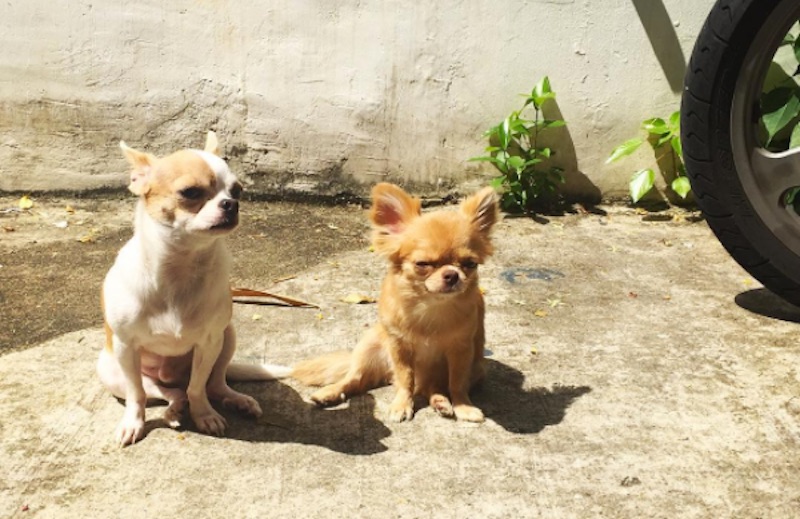We at Coconuts Singapore here absolutely love and adore our furry friends regardless of type, size and breed. As such, we were well intrigued when the Agri-Food & Veterinary Authority of Singapore (AVA) announced the release of a Code of Welfare act that serves as a guide to make sure the health and welfare of our pets are well taken care of. It can only be a good thing for them! We may be a little late to the party, but it doesn’t do any harm to keep spreading the word.
The new act provides a minimum standard for accountability, animal housing and environment, as well as animal management and care that pet owners are expected to comply with. We would like to stress that these standards apply to all pets, unless otherwise stated. Although failure to meet these standards is not an offence, it can be used to support prosecution or other enforcement actions for animal welfare cases.
READ: Why HDB doesn’t allow flat owners to keep pet cats (and how to avoid evicted kitties)
Without further ado, here’s what you should know:
Accountability

Always make sure their whereabouts are known and provide necessary arrangements for their care when unable to attend to them.
Lost pets can be reported to AVA or the police, and putting up posters or appealing to the public and animal welfare groups is highly encouraged.
Make sure doors and gates are secure so that pets remain safe and sound and won’t escape.
Animal housing and environment

Pets are delicate creatures that require constant TLC and we don’t want them to be filled with stress, anxiety and unhappiness due to their environment. Important things to note about their living space include:
Dos
- Large enough with ample space to move
- Well-ventilated
- Hygienic
- Safe
- Secure
Don’ts
- Excessive noise
- Sunlight
- Heat
- Humidity
- Strong winds
- Housing incompatible pets together
- Sharp objects
- Obstructions
Remember to use secure and comfortable tethering that won’t cause any harm or restrict breathing, and always secure pets to an object that is rooted to the ground. Ensure the length does not restrict their movement.
Choke chains should not be used for tethering as they could result in strangulation, so only use them under supervision.
Animal management and care

We know pets love chow time, so it’s important to provide them with a well-balanced and nutritious diet at regular intervals depending on age, activity level, sex, and state of health. Oh, and remember to keep them hydrated with clean drinking water that’s easily accessible.
Pets, like us, are living creatures too, and can be prone to sickness and injury, so look out for them and bring them to a vet if necessary. Bonus tip: Bring them for regular check-ups to ensure they are properly vaccinated and get them microchipped so they can be monitored.
Our furry friends are playful creatures, especially when they’re happy, and that keeps them active and healthy. So interact and bring them out often to play (under proper supervision of course). But don’t be over-zealous with them by using excessive training methods or aids that cause unnecessary pain or suffering.
When transporting them, look out for their safety and comfort by securing them appropriately. Avoid enclosed spaces with poor ventilation and don’t leave them unattended in vehicles.
Provide a safe and comfortable environment for pets and their offspring if pregnant or giving birth. If pets have difficulty giving birth, bring them to a vet immediately. Make sure offspring can munch on solid food before separating them from their mothers. Use milk replacers if mother is not able to produce enough milk or the pup is orphaned.
For special breeds, make sure you go the extra mile so their needs are met. Groom them regularly and prevent over-exertion under heat for cold climate animals.
Body Condition Score Chart

Lastly, the Code of Welfare act includes a body size chart for owners to evaluate the physical state and health of their dogs.
- Emaciated – obvious loss of muscle mass and no discernible body fat, where bones can easily be seen from a distance.
- Thin – ribs can easily be felt and may be visible with no fat cover that gives a sunken appearance to the waist and abdominal area.
- Ideal – well-proportioned with no excess fat covering.
- Overweight – ribs are difficult to feel because of heavy fat cover. Waistline is barely visible.
- Obese – thick layer of fat around body and waistline is not visible. Abdominal area is also rotund.
Many animal welfare groups have called this “baby steps towards a first class animal welfare system” and have largely praised the code, while adding that more still needs to be done. To give you a larger perspective from their point of view, we have also compiled the views and comments of several animal welfare groups.





Reader Interactions